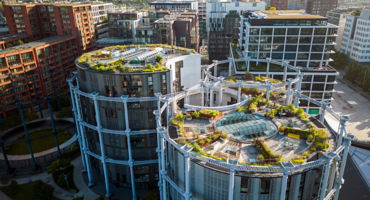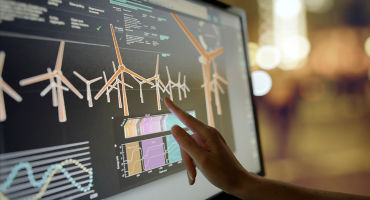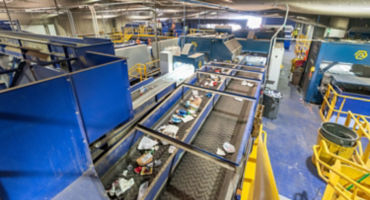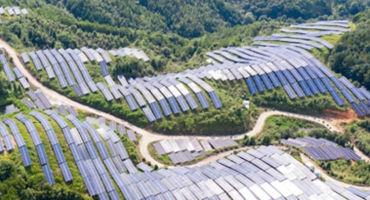- Portfolio Manager
Skip to main content
- Funds
- Insights
- Capabilities
- About Us
- My Account
The views expressed are those of the authors at the time of writing. Other teams may hold different views and make different investment decisions. The value of your investment may become worth more or less than at the time of original investment. While any third-party data used is considered reliable, its accuracy is not guaranteed. For professional, institutional, or accredited investors only.
The recent energy crisis in Europe, inflated oil and gas prices in the US, and ongoing climate disasters around the world have underscored the need to stay focused on decarbonization. By increasing the amount of energy produced from renewable sources, incentivizing demand-side efficiency, and investing in climate mitigation and adaptation solutions, we believe society can reduce long-term costs, bolster energy independence and national security, and mitigate the worst effects of climate change.
At the peak of Europe’s crisis, in August 2022, European natural gas prices spiked to more than 300 euros per megawatt hour, nearly a 20-fold increase over historical averages.1 Now, owing to a mild winter, demand reductions, and ample gas storage, those prices have somewhat normalized. Market watchers remain concerned about long-term energy affordability, however. The structural themes of lowering costs, boosting our energy security, and improving climate resilience present a host of challenges for policymakers along with important opportunities for investors.
The low-carbon transition will require enormous amounts of capital, involve a range of incentives and other policy changes, and necessitate a gradual reduction in reliance on fossil fuels. Shifting the global energy landscape goes far beyond the power sector. We expect to see massive investments in the major systems that fuel our economy, from reconfiguring electricity grids and transportation networks, to fortifying infrastructure, agriculture, and water and waste systems. It will also be important to find new ways of producing, distributing, and consuming energy and natural resources more efficiently. Finally, continued use of carbon-based sources, particularly bridge fuels like natural gas, is likely necessary for full-scale decarbonization. Given the increased demand for electricity and massive infrastructure overhaul we anticipate, hydrocarbons should remain in demand over the coming decades.
Global clean energy investment could rise to US$2 trillion per year by 2030, based on current policy guidelines.2
While the fiscal and social challenges associated with decarbonization are many, the private sector is one key to overcoming them, in our view. Innovative companies are already finding ways to support the energy transition and help society increase climate resilience. Many of these companies are taking advantage of falling input costs and rising demand. They also have long runways for growth and enormous addressable markets, given that the energy transition and climate change are global issues.
Renewables and electricity infrastructure
The most obvious — and by some measures, economical — decarbonization investment theme is renewable energy. Today, the cost to run a new wind or solar farm is less than it is to run a natural gas or coal plant. While the initial costs to install a wind or solar farm are high, useful life of these facilities can be up to 30 years, at almost no incremental cost. Unlike gas or coal production, renewables get cheaper as costs amortize over time. Even if decarbonization weren’t part of the equation, adding more renewables to the energy mix should eventually lower prices for consumers.
Notably, expanding clean power requires more than panels and turbines. Since renewables are not yet viable sources for base-load power, investment in technologies like batteries and fuel cells that enable storage should increase, and as should spending on more efficient methods of facilitating power distribution. Companies that modernize and reconfigure electricity infrastructure for the renewable landscape could experience decades of stable, recurring earnings, which may be largely insulated from economic cycles.
Mitigation and efficiency
Renewables supply is just one part of the equation. We believe the world also needs to invest in solutions that promote demand-side efficiency and reduce overall energy consumption. Better insulation, lighting systems, electric appliances, and smart meters — along with more efficient heating, cooling, and ventilation —should all see growing demand. These technologies don’t typically grab headlines, but cumulatively, they deliver significant energy savings and help reduce carbon emissions. Mitigating the effects of climate change involves electric vehicles and smart transport technologies; plant-based proteins and technologies that enable farmers to use fertilizer more effectively and efficiently; waste-to-energy processes; and carbon capture, utilization, and storage systems.
Adaptation and resilience
Finally, solutions that help society adapt and become more resilient to climate change also have significant growth potential. Previously emitted greenhouse gasses (GHGs) will persist in the atmosphere for decades (in some cases, for millennia). Since these warming agents are here to stay, we need to make our agricultural, transportation, and infrastructure systems more resilient to the unavoidable physical risks of climate change. Adaptation solutions include heat-resistant steel and other construction materials, porous pavement, drought-resistant seeds and crops, climate data providers, forecasting technology, and water and waste management. The list goes on and on.
Working with scientists at Woodwell Climate Research Center and the Joint Program of the Science and Policy of Global Change at the Massachusetts Institute of Technology, Wellington studies and measures the impacts and interconnections among climate physical and transition risks. Understanding both is key to solving the climate challenge. Physical risks like heat, drought, water scarcity, wildfires, hurricanes, flooding, and sea-level rise accelerate transition risks like policy and regulation. And solutions that advance the low-carbon transition can, eventually, help mitigate the physical risks that negatively affect our markets, economy, and way of life.
As with any megatrend, economy-wide decarbonization involves many challenges, from the mundane to the systemic. One underappreciated barrier is permitting. In Europe today, getting an onshore wind farm up and running can take nearly eight years, largely due to the slow, cumbersome permitting processes that are still in place.
Another challenge is market stability, which helps spur investment. Policymakers must structure incentives to provide developers with a long-term view onto their potential return on investment and profitability. This is a key benefit of the US Inflation Reduction Act. Passed in 2022, the legislation provides companies with a 10-year window for market stability and a framework to estimate earnings over time. The European Commission is currently looking to add similar structures to the REPowerEU framework and the nascent Net Zero Industry Act.
A third challenge involves electricity grid infrastructure and power storage. Renewables provide intermittent power, which cannot be base loaded. Until the development of storage solutions, most utilities and electricity grids will need to be reconfigured to deliver power as efficiently as possible.
Finally, arguably the biggest challenge hindering decarbonization is changing behavior at the world’s largest emitters, most notably traditional energy companies. While the world needs carbon-based fuels to enable the transition, the changing energy cost structure, shifting policy environment, governmental focus on energy security as national security, and growing consumer awareness of climate change will require fossil-fuel companies to change course.
Many traditional companies are now focusing their incremental investments and allocation of capital toward clean technology, applying cash flows from existing fossil-fuel infrastructure to future clean energy projects. Several of the largest energy names are investing the most — billions of dollars — into renewables and other sustainable projects. They still have legacy fossil-fuel exposure, but they understand the market’s direction of travel and are preparing to compete in a lower-carbon world.
1Bloomberg | 2“Government Spending Energy Tracker,” International Energy Agency, 9 December 2022
Experts


Featured Unique Perspectives

Impact measurement and management practices
What constitutes an impact investment? How is impact measured? And, what are the benefits of impact investing? Our Impact Management and Measurement Practice Leader Oyin Oduya discusses our approach.

Asia Tech: Building the technology for everything, everywhere, all at once
Yash Patodia articulates the investment opportunities within generative AI and mixed reality - two themes that are supercharging the tech industry. He outlines how Asia is the bedrock of the innovation and where he believes the world’s future growth will be.
URL References
Related Insights
Stay up to date with the latest market insights and our point of view.
Related Insights

Assessing the impact of climate resilience
Oyin Oduya and Louisa Boltz discuss the case for impact solutions focused on climate adaptation and share high-level guidelines to help overcome the associated measurement challenge.

2023 Climate Report
Aligned with TCFD recommendations, this report describes how we manage climate-related risks and opportunities, engage with companies on climate change, and reduce our own carbon footprint.

2023 Sustainability Report
We appreciate the opportunity to share our approach to advancing sustainable practices across our investment, client, and infrastructure platforms.

Picking the right building blocks for a climate-aware portfolio
For asset owners integrating climate change into their multi-asset portfolios, members of our Investment Strategy & Solutions Group offer five important insights.

A blueprint for building climate-aware multi-asset portfolios
Members of our Investment Strategy & Solutions Group take a deep dive on the issues asset owners should consider when choosing climate-aware portfolio building blocks, from the evolving opportunity set to the active/passive decision.

Climate mapping in action: Investment case studies
We describe our Climate Exposure Risk Application (CERA), which can help our investment teams visualize and quantify physical climate risks.

Private investing portfolio company interview with AMP Robotics CEO
Dr. Matanya Horowitz, CEO of AMP Robotics, highlights how the company integrates AI and robotics into the recycling industry and explores the “actionable guidance” Wellington provides on ESG and other strategic issues.

Why sustainable food systems matter to investors
Our climate research expert explores insights from our joint work with Woodwell Climate Research Center on the pivotal relationship between food systems and biodiversity and highlights potential investment opportunities.

Why climate change matters in private markets

When extreme weather becomes the norm: what’s next for climate investors?
Climate investors can play a crucial role in accelerating mitigation and adaptation solutions. But finding investable opportunities requires a deep understanding of the climate investing landscape.

WellSaid: The economic significance of biodiversity
In this short clip from his WellSaid podcast interview, Dr. Zach Zobel of Woodwell Climate Research Center discusses the economic importance of coral reefs — lynchpins of marine biodiversity and vital to fishing, tourism, and other industries.
URL References
Related Insights